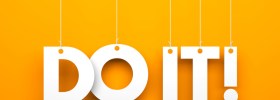It’s fair to say that for most people wearable technology revolves around fitness gadgets and little else.
Devices from the likes of Fitbit, Jawbone, Garmin and Moov can monitor heart rate, pulse, how many steps taken, distance covered, sleep quality, and more. Most devices also offer calorie counting via apps or websites, to complete the full fitness monitoring cycle.
For what it’s worth, I use a Fitbit Flex, and while I do find some of the functionality a bit limited (particularly when it comes to sleep monitoring) it’s been great at making me more active. There’s nothing like the motivation of hitting your step target for the day to get you off the bus or metro a stop early, or to get you to take a walk around the block.
Then there are devices that do the above and a little more. I’m thinking of the likes of Apple’s smartwatch. Apple Watch can keep track on how active you are during the day and prompt you to go for a walk, and it can also keep you up to date with texts and emails and so on. It can also be used to play music, pay for things and access maps.
So it seems that for wearable technology it’s either about making people more active or acting as an extension of the smartphone. But is that all? Is that really all we can get out of wearable technology?
No, is the short answer to that question. There are plenty of experts out there who believe that businesses will find the best uses for wearable technology and will lead the way in adoption. One aspect of that will be fitness; the idea being that fitter and healthier workers will be happier and more likely to be productive. Some companies have started giving out wearable devices to workers to monitor their activity and sleep patterns.
One company, data science consultancy Profusion, is tracking its staff through Fitbit devices. According to the Financial Times, the company monitored 31 members of staff across 170 metrics to gain a better understanding of the general health of their workers.
The big question over this aspect of wearables in the workplace is how happy employees would be to be under constant surveillance. One survey, carried out by PwC actually shows that many would be in favour of using wearables provided by their bosses… if the information collected is used to improve office life.
As Anthony Bruce of PwC points out: “Many workers still have an understandable “big brother” reaction to sharing any of their personal data with their employers, but our research shows that most people can be persuaded if they can see clear personal or workplace benefits.”
And it’s not just the fitness/wellness side of things that is making workers with wearables more productive.
Many experts believe that wearable devices – smart-glasses in particular – will provide big productivity boosts to workers that are often required to use their hands. Think about, for example, a field worker out on a job to fix a telephone exchange. Instead of having to keep taking their hands and eyes off the job in front of them to check something on a laptop or tablet, smart-glasses with a display can deliver the information straight to the worker.
Think, too, about warehouse workers whose job it is to gather and dispatch items from shelves. Instead of having to manually log each item, a barcode reader (or something similar) attached to their wrist or glasses can automatically log each item.
In fact, research company Gartner reckons the field services industry can increase profits by $1 billion annually by using smart-glasses. “The greatest savings in field service will come from diagnosing and fixing problems more quickly, without needing to bring additional experts to remote sites,’ the company says.
The idea of hands-free access to real-time information, which the worker can refer to without losing focus on the task at hand, is one that applies to most office-based workers as well. It’s not just limited to field services workers.
There is a little way to go before we’re at the stage when wearable devices are routinely handed out at businesses. That’s partly due to the cost of rolling out any new device, but it’s also to do with worries over privacy and some bosses simply not being sure of the benefits they will bring to the business.
But there certainly is confidence that wearable devices can and will make a positive impact at businesses across the world, from improving fitness to helping us all be more productive.









